Going to the Sun Road is a 50 mile long scenic mountain road in Glacier National Park. It is the only road that crosses the park, reaching its highest point at Logan Pass with an elevation of 6,646 feet as it crosses the Continental Divide. It is often considered one of America’s Best Scenic Drives.
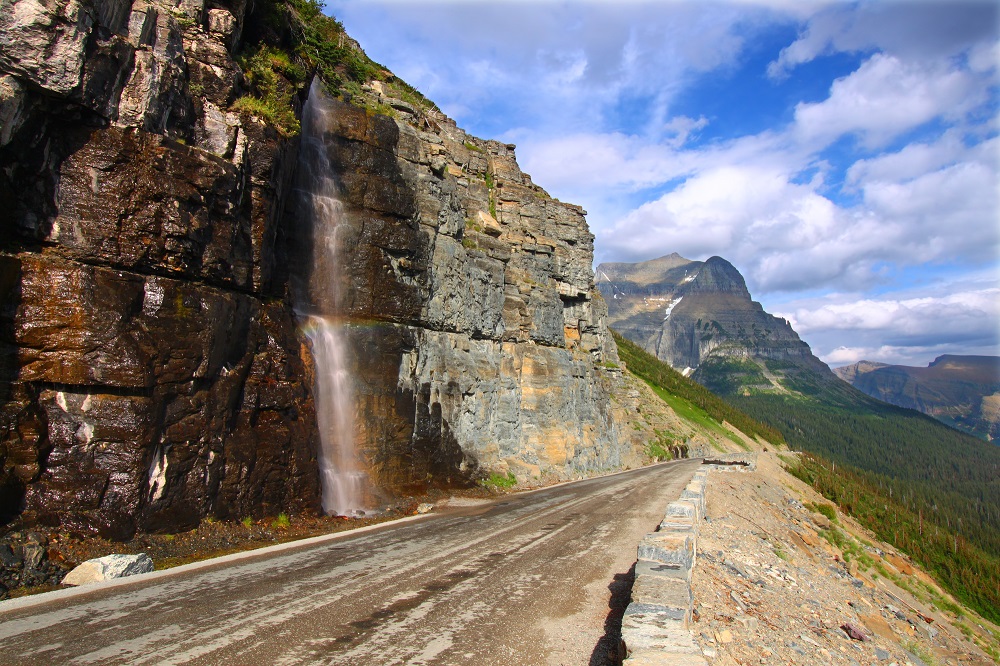
It took more than 10 years to complete the road and its formal dedication occurred in July 1933. Construction of the road decreased the amount of time to travel through the park from several days to several hours.
The road is generally open its entire length from June to mid-October, although it is weather dependent. It takes months to plow the road in the spring. If you are headed to the area in June, be sure to check whether the road is open since the latest open ever recorded was in mid-July. Portions of the road remain open all year to provide access to park locations.
There are vehicle restrictions from Avalanche Creek to Rising Sun, with vehicle lengths of no more than 21 feet and no wider than 8 feet allowed. Vehicles over 10 feet are not recommended when driving west between Logan Pass and the Loop due to rock overhangs.
Lake McDonald
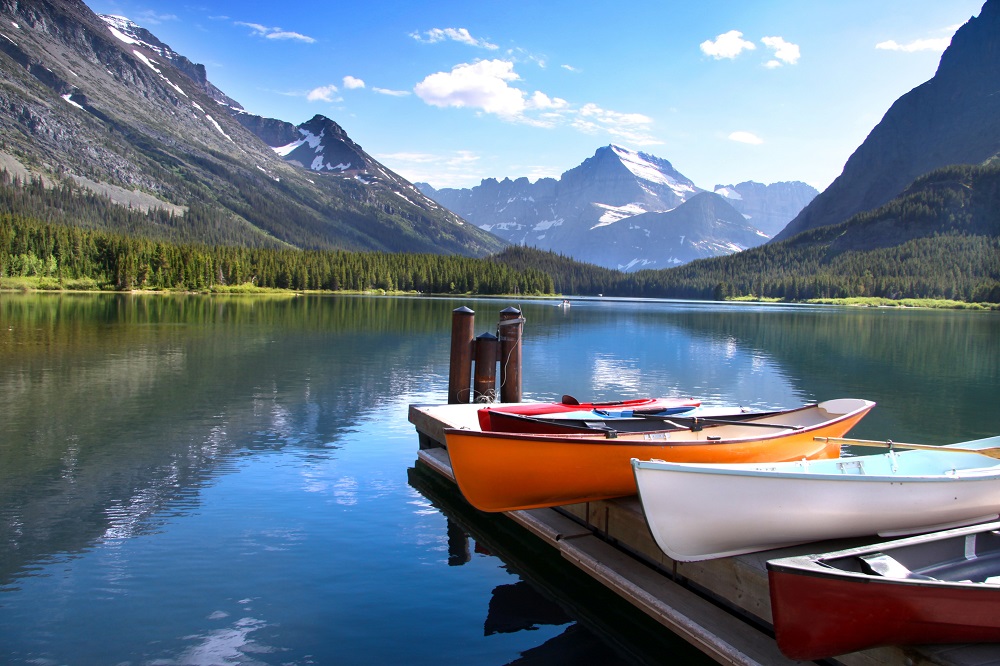
The largest lake in Glacier National Park is located on the west side of the park. It is more than 10 miles long and over a mile wide filling a valley formed by glacial carving. The area contains the Apgar Visitor Center and four campgrounds.
Avalanche Lake
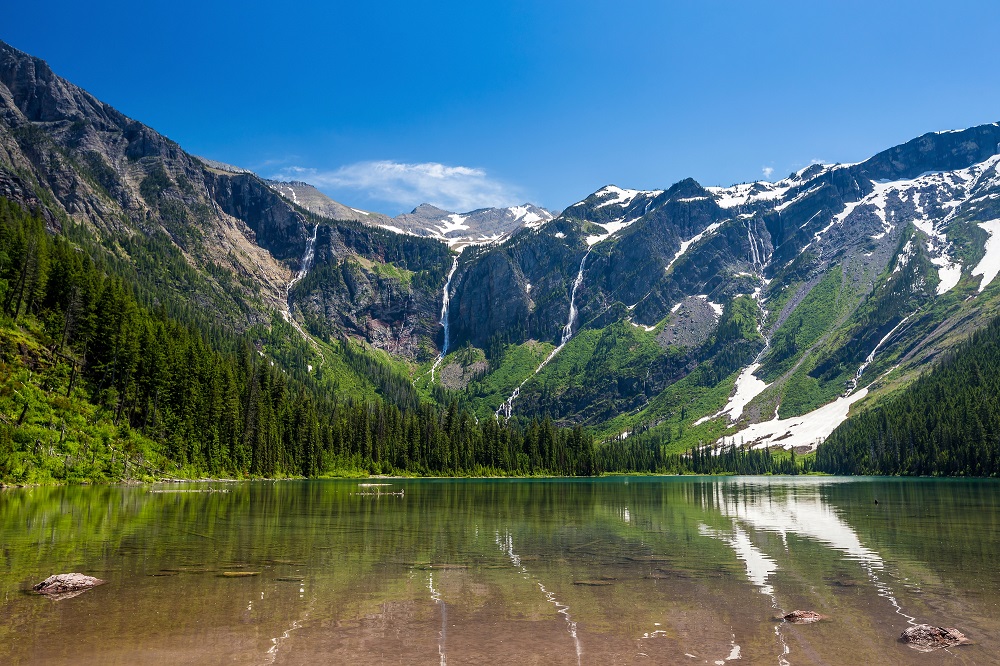
This lake is reached by a two mile hike from the trailhead on the Trail of the Cedars. The foot of the lake is approximately 2.3 miles (one way) from Going-to-the-Sun Road. It sits at the foot of Bearhat Mountain.
The Loop
This is a large switchback in Going-to-the-Sun Road following McDonald Creek and the Garden Wall. The Loop provided an alternative to a series of 15 switchbacks that otherwise would have been required to cross the Continental Divide.
Hidden Lake
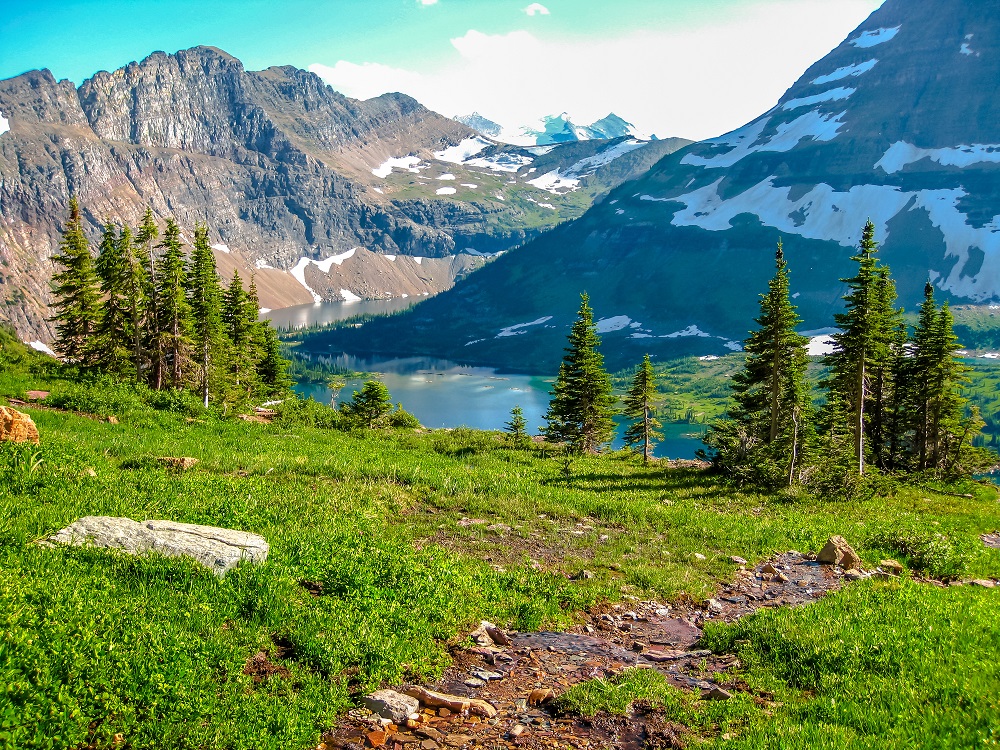
Hidden Lake is a popular day hike destination in the Logan Pass area, with hikers choosing between turning back at either the Hidden Lake Overlook or adding on a trip to the lake shore itself. The lake sits at an elevation of 6,375 feet and the view of the lake features Reynolds Mountain and Bearhat Mountain. The overlook and lake are reached by the Hidden Lake Nature Trail, with the trailhead beginning on the back side of the Logan Pass Visitor Center.
Trail of the Cedars
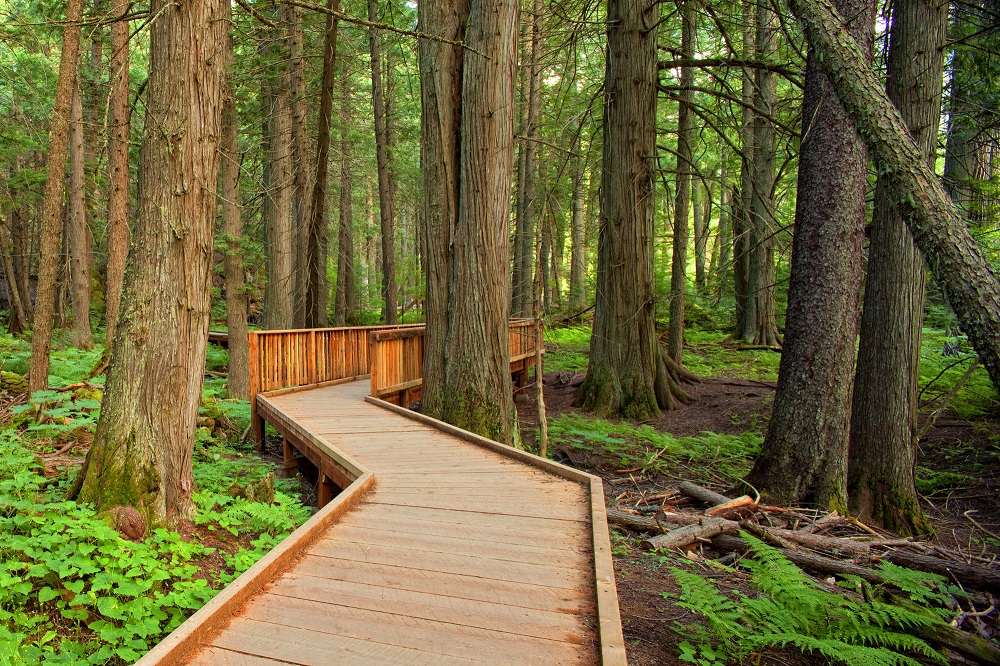
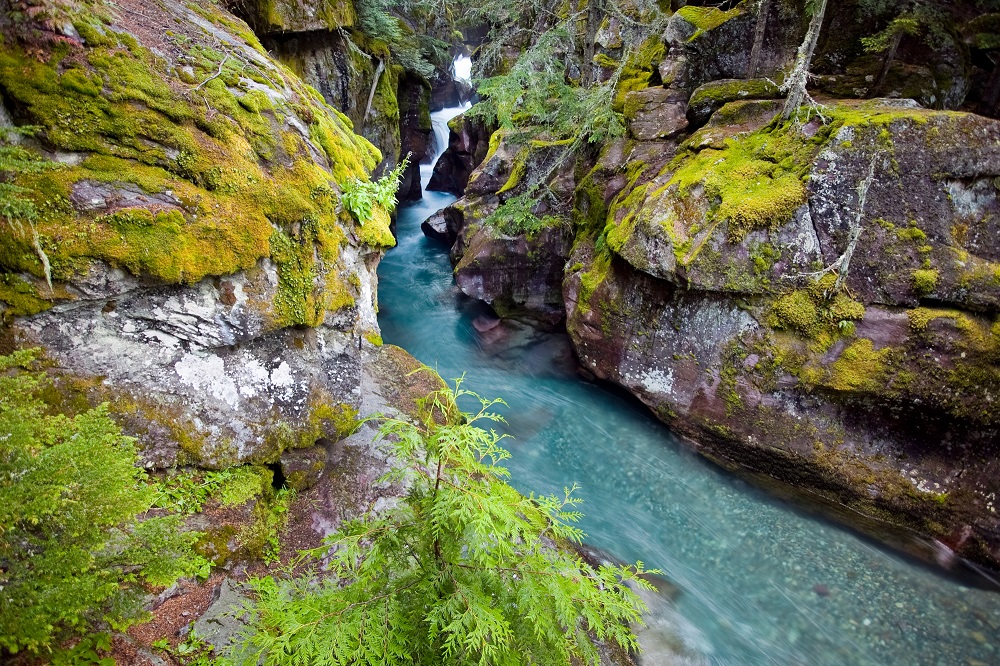
This is a .8 mile wheelchair accessible loop trail with its trailhead on Going-to-the-Sun Road, six miles east of Lake McDonald Lodge. The old growth forest features tall red cedar and black cottonwood trees along the path. The loop trail also provides visitors a view of Avalanche Gorge (also pictured above), which funnels Avalanche Creek through the tropical area.
Mount Oberlin
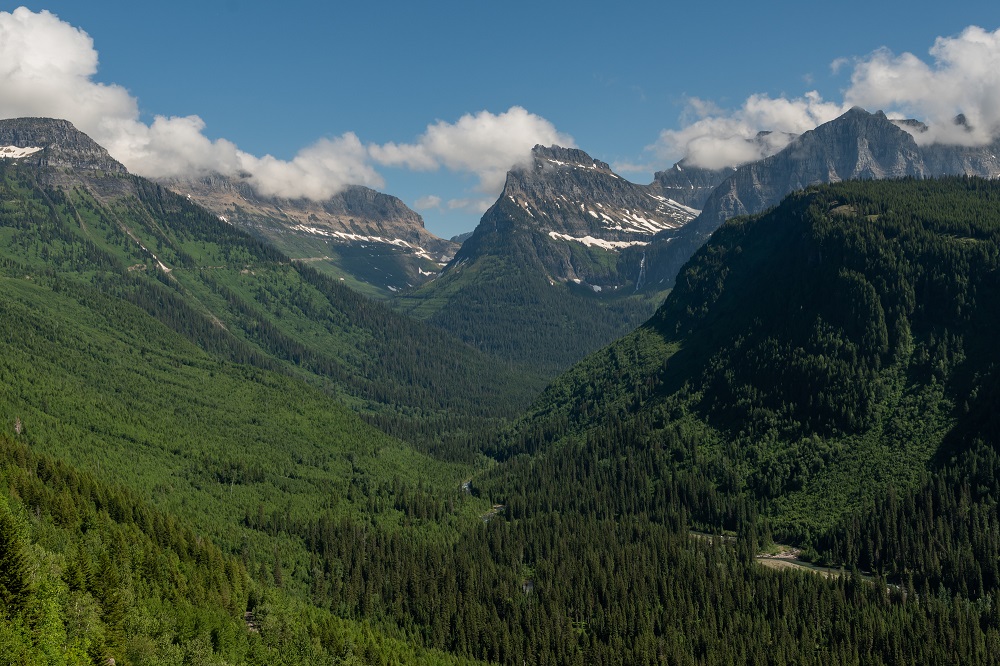
This 8184 foot mountain is located in the Lewis Range just northwest of Logan Pass. The Lewis Range is a 160 mile segment of the northern Rockies which was formed by the Lewis Overthrust, a geological thrust fault.
Bird Woman Falls
This approximately 500 foot waterfall is located just west of the continental divide along Going-to-the-Sun Road. It sits between Mount Oberlin and Mout Cannon.
Logan Pass
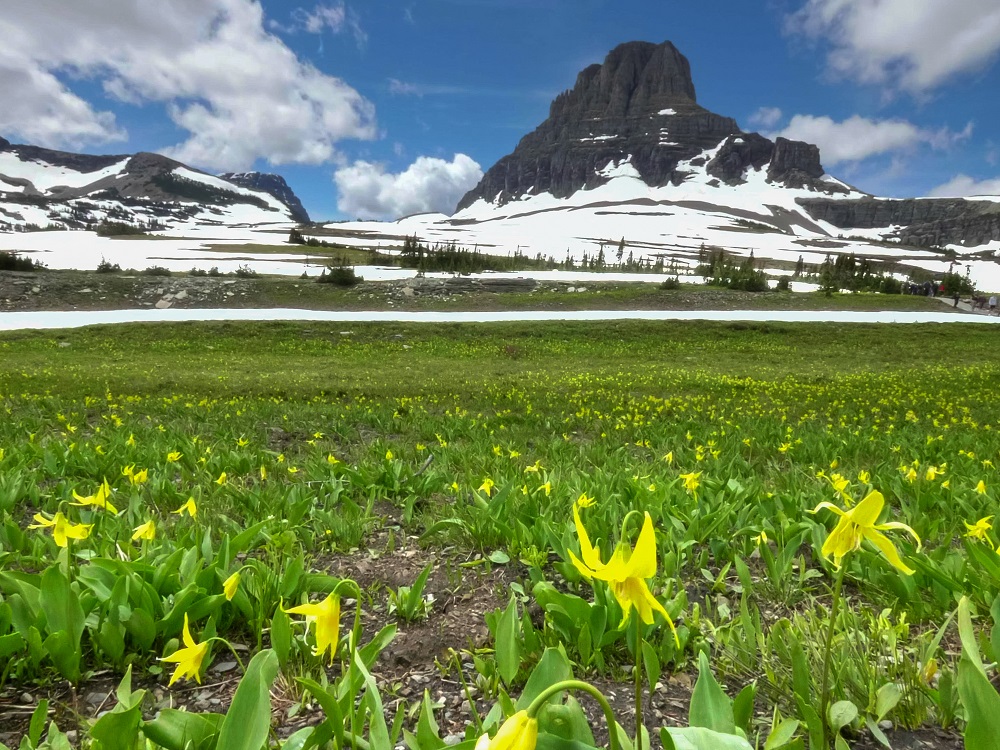
This is the highest elevation accessible by car in Glacier. The area is popular with visitors and the park service advises that the parking lot is generally full between 8:30 am and 4 PM. Two of the popular trails in the area are the Hidden Lake trail and the Highline trail.
Saint Mary Lake
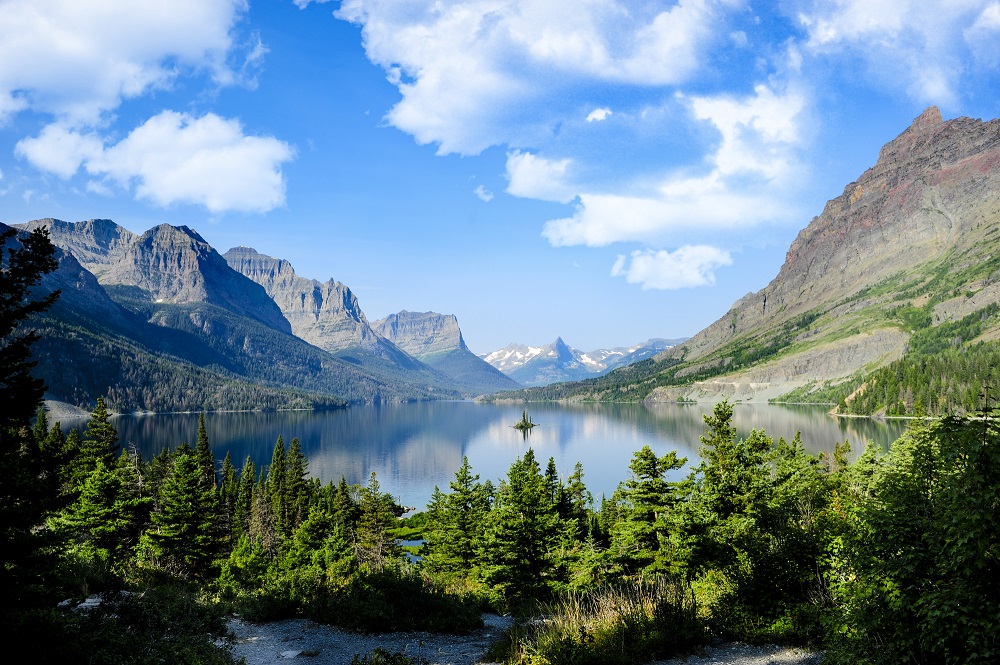
This is the second largest lake in Glacier National Park, located on the east side of the park and paralleled by Going-to-the-Sun Road. Wild Goose Island here is one of the most photographed locations along the road.
FREQUENTLY ASKED QUESTIONS
Where does Going to the Sun Road start and end?
The west side of the road starts at US Highway 2 in West Glacier near the Middle Fork of Flathead River. On the east side, it begins at Highway 89 near St. Mary. When Logan Pass is closed and GTSR is closed, visitors can travel around the closed road via a two hour detour on US-89 and US-2.
Going to the Sun Road Opening Date 2020
The road usually opens at Logan Pass between mid-June and mid-July. However, it is dependent on road and snow conditions. Plowing usually begins in April, and the park service posts updates on its website informing guests and vacation planners of their progress. However, the opening for 2020 may be delayed at least a few days beyond what is necessary to remove the snow. In 2019, the park service authorized a pavement preservation project for Sun Road. As a result of the project, the park service has announced that the road will not open before June 22, 2020 in order to complete part of the project, if necessary. The latest opening since the inauguration of the road was July 13, 2011. For the past five years, the road opened on June 23, June 23, June 28, June 17 and June 19.
Going to the Sun Road Shuttle
The national park service hired a shuttle service to operate as part of a plan to reduce vehicle congestion beginning in 2007. The shuttle operator provided free two way hop-on hop-off shuttles along Going to the Sun Road. The road rehabilitation project that kickstarted the shuttle service has been completed. In December 2019, the park service announced that it was terminating the contract and would investigate new solutions. The park is considering other options for a shuttle service during the 2020 summer season.
Going to the Sun Road Tours
There are two operators offering bus tours of Glacier National Park along Going to the Sun Road. They are the Sun Tours and the Red Bus Tours. The park service also has both an audio and video tour of the road available online.
Going to the Sun Road Construction 2020
Summer 2020 brings the final stages of a decade long road repar project. Road crews are expected to be repairing log barriers, culverts, guardrails and other aspects that may create delays in a localized area. The park service estimates that these repairs should add no more than 20 minutes to a journey from St. Mary to West Glacier on the park road. Note: the summer of 2020 will be the start of a two year road rehabilitation project in the Many Glacier area, so there may be delays in other areas of Glacier National Park.
Going to the Sun Road Deaths
Going to the Sun Road (also known as Sun Road or GTSR) is known as a narrow and winding road with spectacular views, particularly west of Logan Pass. So you would not be alone wondering how many people die while travelling the road every year. However, that number is probably lower than you would imagine. Glacier National Park averages only about 2.5 deaths a year over the past one hundred years or so. This is the count for the entire park and not just the Sun Road. The leading cause of death in the park is drowning, and the count includes climbing and hiking accidents as well. This is not to say that people have not gone over the side while driving. Our research Another problem is rock falls.